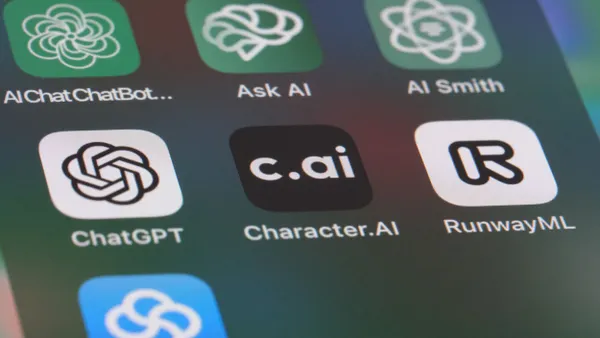Dive Brief:
- The U.S. Department of Education’s Office of Educational Technology on Thursday released its highly anticipated guidance to help K-12 leaders integrate artificial intelligence into their school districts.
- The AI toolkit’s development was prompted by President Joe Biden’s October 2023 executive order, which called for his administration to create resources that would help teachers implement the technology.
- This new federal AI resource comes as more districts look to use the technology in their classrooms or for business operations. While almost half of states have released their own K-12 AI guidance, education industry leaders continue to stress the need for more uniform advice from the federal government.
Dive Insight:
The 74-page toolkit is designed to help K-12 leaders “make critical decisions about incorporating AI applications into student learning and instructional core,” the Education Department said in its resource documents.
The Education Department broke down its guidance into three sections:
- Mitigating risks while safeguarding students’ privacy, security and civil rights.
- Building a strategy for integrating the use of AI tools that best fits students’ needs.
- Guiding the effective use of AI to boost teaching and learning.
The department’s recommendations for managing AI’s risks will need more insight from the education community, said Sara Kloek, vice president of education and children’s policy at the Software & Information Industry Association, in a Thursday statement. More input is needed, for instance, on the use of impact assessments and testing AI, she said.
Overall, Kloek said the toolkit offers “actionable guidance” that schools, districts and states can customize for their own use.
The toolkit aims to help a variety of education leaders, from those who may be novices with using AI in their districts to others who are more experienced. Regardless of experience level, the department stresses keeping safety, ethics and equity in mind.
The department formed its guidance following public listening sessions it held with 90 educators between December 2023 and March 2024. Additionally, there were 12 roundtable discussions with education leaders hosted by the department in the same period.
Research shows that school districts are still working to develop their own formal AI use policies.
Even among 40 select school systems that were early to adopt AI, roughly one-third that first embraced the technology have not made public AI guidance available, according to an analysis released this week by the Center on Reinventing Public Education, a nonpartisan research and policy analysis organization.
A separate April report by Rand Corp. and CRPE, based on a fall 2023 survey of 231 districts, showed only 5% adopted a specific use policy for students regarding generative AI.
Researchers and district leaders have suggested that schools have been hesitant to adopt guidance this year for several reasons, including struggles to balance AI with other district challenges and concerns with rushing the process of AI implementation.
In fact, only a small fraction of superintendents viewed AI as a “very urgent” need this year, according to a February survey by education consulting firm EAB. That same report found that other issues such as staffing, chronic absenteeism and student discipline were higher priorities for superintendents.
However, one Iowa school district explained to K-12 Dive in August that its approach for exploring AI use for students and staff has been a “go slow to go fast” strategy to ensure the school district is applying the technology in a safe, responsible and ethical way.














